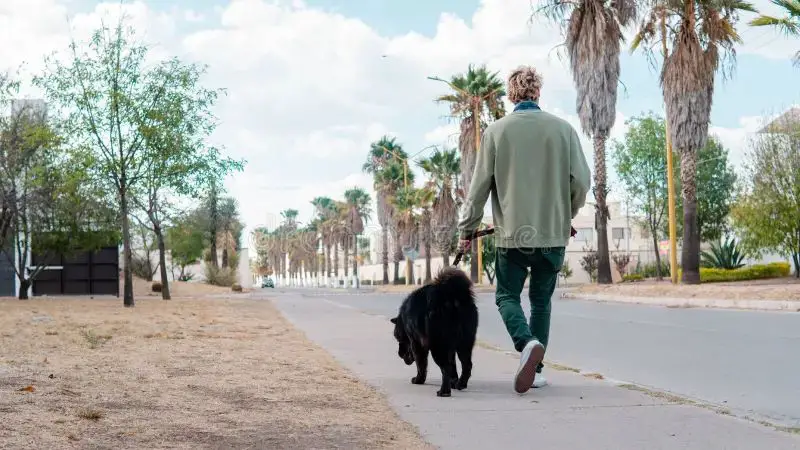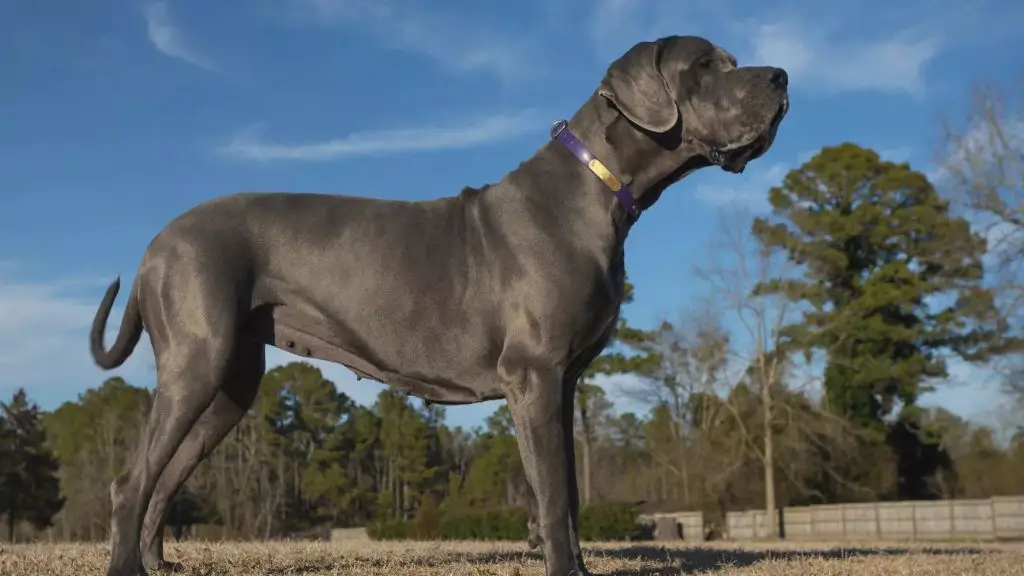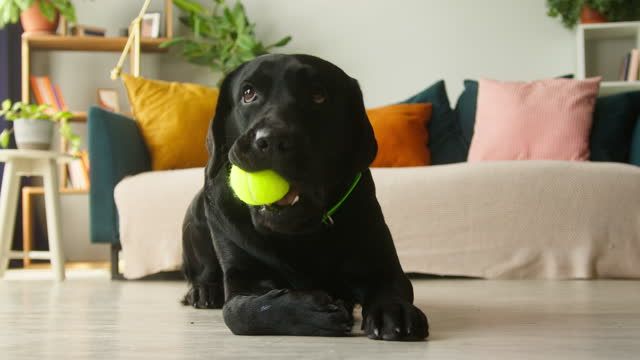Introducing the Debate
The question of whether big dogs can live comfortably and happily in small houses is one that has long divided dog owners and experts. On one side of the debate are those who argue that size really doesn’t matter – it’s more about meeting a dog’s basic needs for exercise, affection, training and companionship. On the other side are those who insist that large breed dogs need ample indoor and outdoor space to thrive and that small houses are inappropriate environments.
Those in favor of big dogs in small spaces cite the adaptable nature of dogs and the potential to meet their needs with thoughtful care and management. They argue that with enough walks, playtime, crate training and stimulation you can make any space work. Those opposed counter that no amount of outdoor time can compensate for being cramped at home, and that small spaces stress big dogs out and limit natural behaviors.
At the heart of the debate are questions around what constitutes a ‘big’ dog versus a ‘small’ house, and how to balance a dog’s welfare with human desires. This article will dive deeper into the considerations around keeping a large breed dog in a small home in the hope of providing guidance to those contemplating getting a big dog for their little house.
Defining ‘Big Dog’
When it comes to determining what qualifies as a “big dog”, there are a few key factors to consider:

Size – Generally, dogs weighing over 50-60 lbs as adults are considered large or “big” breeds. Some of the most popular big dog breeds include:
- Labrador Retriever
- German Shepherd
- Rottweiler
- Great Dane
- Mastiff
- Saint Bernard
- Newfoundland
Energy Level – Many larger dogs have high exercise needs and energetic temperaments. Herding breeds like Collies and Shepherds need ample daily activity.
Presence – Even at a healthy weight, big dogs naturally have a larger frame, paws, head size compared to smaller breeds. Their sheer size can make them intimidating.

So while size is the most obvious factor, energy level and overall presence contribute to a dog feeling “big.” Responsible ownership means understanding these traits typical of larger breeds.
Defining ‘Small House’
When it comes to determining what constitutes a small house, there are a few factors to consider. Generally, houses under 1,000 square feet are considered small homes. The average new home built in the U.S. is around 2,500 square feet, so anything well below that threshold could be called small. For reference, some common small home sizes include:
- Tiny home: Under 400 square feet
- Small cottage: 400 – 800 square feet
- Compact house: 800 – 1,200 square feet
Of course, the perception of size is relative. What feels small to one person may feel spacious to another. But for the purposes of this article, we’ll define a small house as anything under 1,000 square feet. This provides a reasonable cutoff point for evaluating if bigger dogs can live comfortably in more compact spaces.

Space Considerations
When deciding if a big dog can live comfortably in a small house, the amount of space available is a major factor to consider. Big dogs generally need more room to move around, play, and rest than smaller dogs. Here are some space requirements to keep in mind:
- Big dogs should have enough room indoors to easily stand, sit, lie down, and turn around. Tight, cramped quarters will be uncomfortable.
- They need open floor space for daily activities like fetching toys, chewing bones, or playing tug of war. A lack of open space can lead to boredom and behavior problems.
- Sufficient area for food and water bowls, beds, crates, and other supplies is important. Crowding these items into a small space creates clutter.
- Having a spot to call their own, like a dog bed in a quiet corner, helps big dogs feel secure. They need room for these private retreats.
- Routes for moving between areas of the home should accommodate a large dog’s size. Narrow hallways or tight corners can be tricky.
While it’s possible for a big dog to live in a small house, cramped quarters should be avoided. Make sure there’s enough open floor space and room for your dog’s necessities. Lack of adequate room is stressful and unhealthy.
Yard Requirements
When it comes to housing a big dog, one of the biggest considerations is whether or not you have an adequately sized yard. Many people assume that big dogs need access to a large backyard in order to get sufficient exercise. However, this isn’t necessarily the case.
While a yard can be useful for giving a big dog room to run around and play, it’s not an absolute requirement. Big dogs can get all the exercise they need through daily walks, trips to the dog park, playtime indoors, and mental stimulation through training and toys. The most important factor is the amount of exercise, not necessarily having a yard.
That said, a yard can make life easier when you have a big dog. You don’t have to walk them every time they need to relieve themselves. And you can let them outside to play while you cook dinner or get some work done inside. But again, it’s not mandatory. With proper planning and commitment, you can meet a big dog’s exercise needs, even without access to a yard.
The bottom line is that while a yard is great, it’s not a deal breaker when it comes to having a big dog in a small home. Focus more on fulfilling their overall exercise requirements, regardless of your housing situation. With creativity and effort, you can keep your big dog active and healthy.
Exercise Needs
One of the main factors to consider when owning a big dog in a small home is the amount of exercise large breeds require. Big dogs, especially energetic breeds like Labradors, German Shepherds, and Huskies have high exercise needs. A lack of physical and mental stimulation can lead to problem behaviors like excessive barking, destructive chewing, digging, and hyperactivity.
Most experts recommend big dogs receive at least 60-120 minutes of exercise per day. This exercise should include high-energy activities like running, hiking, swimming, playing fetch, or going on long walks. Simply having a backyard is usually not enough – big dogs need interactive exercise and engagement. Additionally, many large breeds need opportunities to run off-leash in open spaces.

Providing adequate exercise for a large dog while living in a small home with limited indoor and outdoor space can be challenging. Their exercise needs may be difficult to meet, especially for owners with 9-5 jobs or those who live in apartments. Hiring dog walkers or sending the dogs to daycare are options, but add expense. Potential solutions include taking the dog to a dog park before/after work or dedicating weekends to outdoor adventures together. If an owner can’t commit to providing almost two hours of daily exercise, a big dog may not be the right pet for a small home. Their high activity requirements must be met to have a well-behaved and happy dog.
Training Challenges
Getting a big dog while living in a small house does present some unique training challenges. Due to their large size and strength, big dogs need extensive obedience training from an early age. Without proper manners training, they may unintentionally knock things over or be difficult to control on walks. Big dogs also tend to be very energetic, especially as puppies, so they will need more training to learn how to settle down and relax in a limited space.
Housetraining a big puppy can be especially challenging in a small home, as they have less room to make mistakes. You’ll need to be extremely diligent about taking them out frequently and rewarding successes. Leash training is also critical so you can move such a large dog safely through your home and out the door for potty breaks.
While training any puppy takes time and dedication, training a big dog in a small house really tests your patience and consistency. But it’s not impossible if you commit to regular training sessions using positive reinforcement techniques. The key is starting training early and proving to your big dog that good behaviors get rewarded, even in tight quarters.
Logistical Challenges
Owning a large dog in a small home presents some logistical challenges that need to be considered. Food and supplies can take up a lot of space, so storage is an issue. Large bags of food may not fit in small closets or pantries. Storing crates, beds, toys, grooming supplies, etc. also takes up room. Daily tasks like feeding, watering and cleaning up after a big dog in a confined area takes more effort.
Grooming a large dog in a small house is tricky too. Giving baths, brushing, and trimming nails of a big dog requires adequate space. Hiring professional groomers is an option but adds expense. Transporting a large dog for vet visits also poses logistical difficulties, especially if you only have a small car. Maneuvering a sick or injured big dog around tight spaces would also be hard.
Financial Considerations
Having a big dog in a small house comes with significant financial costs that you need to consider. Large breed dogs eat more food than smaller dogs, with costs ranging from $50-100 per month for high quality kibble. They may also need more supplies like a larger crate, bigger toys that are more durable, and a more heavy duty leash/harness. Additionally, big dogs often incur higher medical bills due to their tendency for joint issues and other health problems. You’ll need to budget for preventative vet care as well as any emergency visits. Grooming costs will also likely be higher with a long haired or frequent shedding breed. If you plan to use a dog walker when you’re not home, this is an added expense that can run $15-25 per walk. While any dog comes with financial responsibilities, big dogs amplify these costs in nearly every category. Make sure you’re prepared for this before committing to a large breed in a small house.
The Verdict
The answer to the question, “Can a big dog live happily in a small house?” is nuanced. Ultimately, a big dog can absolutely thrive in a small home, but it requires commitment, adaptability, training, and proper care from their owner.
With the right amount of daily exercise, mental stimulation, and quality time with their family, big dogs like Great Danes and Mastiffs can live very fulfilled lives in apartments and smaller homes. The space itself is less important than the lifestyle and care the owner provides.
That said, small houses do present logistical challenges for big dog owners. More frequent walks, access to dog parks, training, cleaning, and planning are required. The costs also go up. As long as an owner understands and accepts these tradeoffs, they can give a big dog everything they need, even without a big yard.
While a large house with a yard is often ideal, it’s not always necessary for a big dog’s happiness. With the proper commitment, any loving owner in any size home can find success with a big, lovable companion by their side.